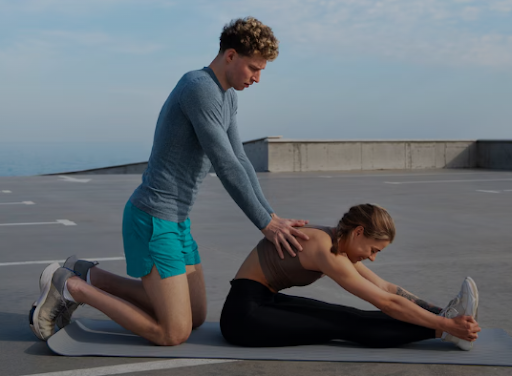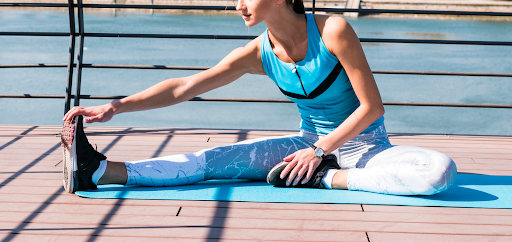News/Commentary
- SEC Media name Arch Manning and Texas as most likely to win conference in 2025
- Live Dealer Casino Games At Casinia
- NFL: Can Washington keep the momentum going in 2025?
- Stretching to Prevent Long-Term Injuries
- NFT Gambling, Crypto Bonuses, and the Weird Future of Online Casinos
- How New Laws Could Steer Alabama’s Football Identity in a New Direction
- Bengals Prowling For a Rebound in 2025
Stretching to Prevent Long-Term Injuries
July 22, 2025 by Staff
Every once in a while, you wake up and discover a stiff hip you definitely didn't feel yesterday. One awkward step, and just like that, an angry hamstring can bench you. That is why a couple of quick stretches every day deserve your attention. Stretching keeps your muscles long, lively, and a lot less cranky, and it works best when you pair it with strength exercises. Stay flexible, and the odds tilt in your favor.
Dynamic Warm-Up Stretches
A good workout really begins before you ever lift a weight. Shaking out your muscles with moving stretches beats holding a pose every time. Even betting apps like the MelBet app admit that when athletes prep right, they jump higher, react quicker, and last longer.
Warming up on the go pumps fresh blood into sleepy tissues and wakes up stiff joints. Think of it as turning the ignition on a car that has sat all night-a fast rev is pointless if the engine is still cold.
Leg swings and hip openers do the job both as mobility drills and a low-key cardio burst. Skip that, and cold fibers risk tearing the second you push hard, so any smart plan must slot this in upfront.

Post-Workout Static Stretching
After an hour’s grueling workout session, engaging in static stretches is beneficial for aiding muscle recovery, along with some deep breathing exercises. These types of movements help your body reset different systems while slowly shifting their centers of gravity back toward neutral.
Post-session essential stretches:
- Hamstring stretch: Increases stride length, assisting in controlling balance
- Calf stretch: Essential for balanced calves, especially post-sprint workouts
- Quad Stretch: Focused on calves used heavily during the workout, pulls add ease later
These stretches help prevent your body from tensing up overnight and reduce the likelihood of becoming stiff. Make these a must- treat them as a routine.
Targeted Stretching for Common Risk Zones
Some areas of the body are more prone to injuries; these specific stretches target upper and lower value, low-risk zones. Even Melbet Vietnam Facebook often highlights how flexible work can reduce injury odds and help athletes stay consistent. These aren’t just feel-good moves—they’re preventative tools. Tight hips, stiff ankles, or weak lower backs can throw off your whole mechanics. Addressing them early means fewer setbacks, better form, and more time on the field.
Lower Back and Hips
The lower back is often neglected, especially while sitting or lifting heavy weights. Tight hips paired with weak glutes exacerbate this problem. This is why stretches like pigeon pose and seated spinal twist work so well—they properly decompress the spine and simultaneously unlock tension in your hips.
The combination realigns posture along with correcting mobility restrictions in the lower body, which helps prevent injury. It may avoid attention, but it does wonders for daily functional movement. With consistency, it improves the lifting experience, reduces soreness, and eliminates stiffness, helping to alleviate lower back pain.
Ankles and Calves
Stiff calves and cranky ankles can slow you down and make every jump feel risky. A quick heel drop off a curb wakes up the ankle, and easy forward circles for the calf reclaim that lost stretch.
Loose, tough ankles shrug off sprains, steady your balance, and let you cut or sprint on a dime. The joints may look tiny, yet they steer how you land and push off the ground. Skip ankle care for a week, and even a small scrape can leave you nursing a painful setback.

Stretching Frequency and Timing
Sustaining flexibility requires committing to a regular workout routine; therefore, it's unrealistic to expect results if stretch exercises are done only once a week. Even top-level athletes lose mobility without following proper schedules. Attending at least three sessions per week yields the best results. Focused two-minute bursts on specific muscle groups are ideal compared to vague, enduring forms of exercise.
When moving warm muscles post-workout, static stretches should be performed, while dynamic ones should be done during pre-game to relax and warm up. Exercising early in the morning helps loosen tight areas that stiffen overnight, as well as reset sore spots that develop over time due to poor posture or repetitive, dull movements during everyday activities, such as working at a desk job or attending lectures.
Why It All Adds Up Over Time
Cumulatively, off-season training improves flexibility while strengthening ligaments through preventive treatment. This helps athletes stay “in the game” for more extended periods, ultimately minimizing injury risk by reducing the likelihood of interrupted exercise routines due to frequent injuries caused by tighter range restrictions during movement.